The primary difference between programming languages and frameworks is that a language describes syntax, grammar, semantics (and sometimes a core library) requiring the support of its implementers. A framework, on the other hand, is a collection of library code that works together to simplify the syntax, grammar, or semantics of any language in which it is written. But why should you care about frameworks and programming languages?
We know that digital and AI technologies are transforming the world of work, and that today’s workforce will need to learn new skills and adapt as new occupations emerge. We also know that the COVID-19 crisis has hastened this process.
The Code & Care Team conducted research on the types of jobs that will be created as well as high-level skills that will become increasingly important. And we’ve deduced that programming and software development skills will tip the balance. Software developers specialize in a variety of fields, honing their skills in various programming languages, techniques, or disciplines such as design.
And, in recent years, an increasing number of professionals have expressed a desire to advance in these fields. In fact, the global developer population is expected to reach 28.7 million by 2024, a 3.2 million increase from the previous year.
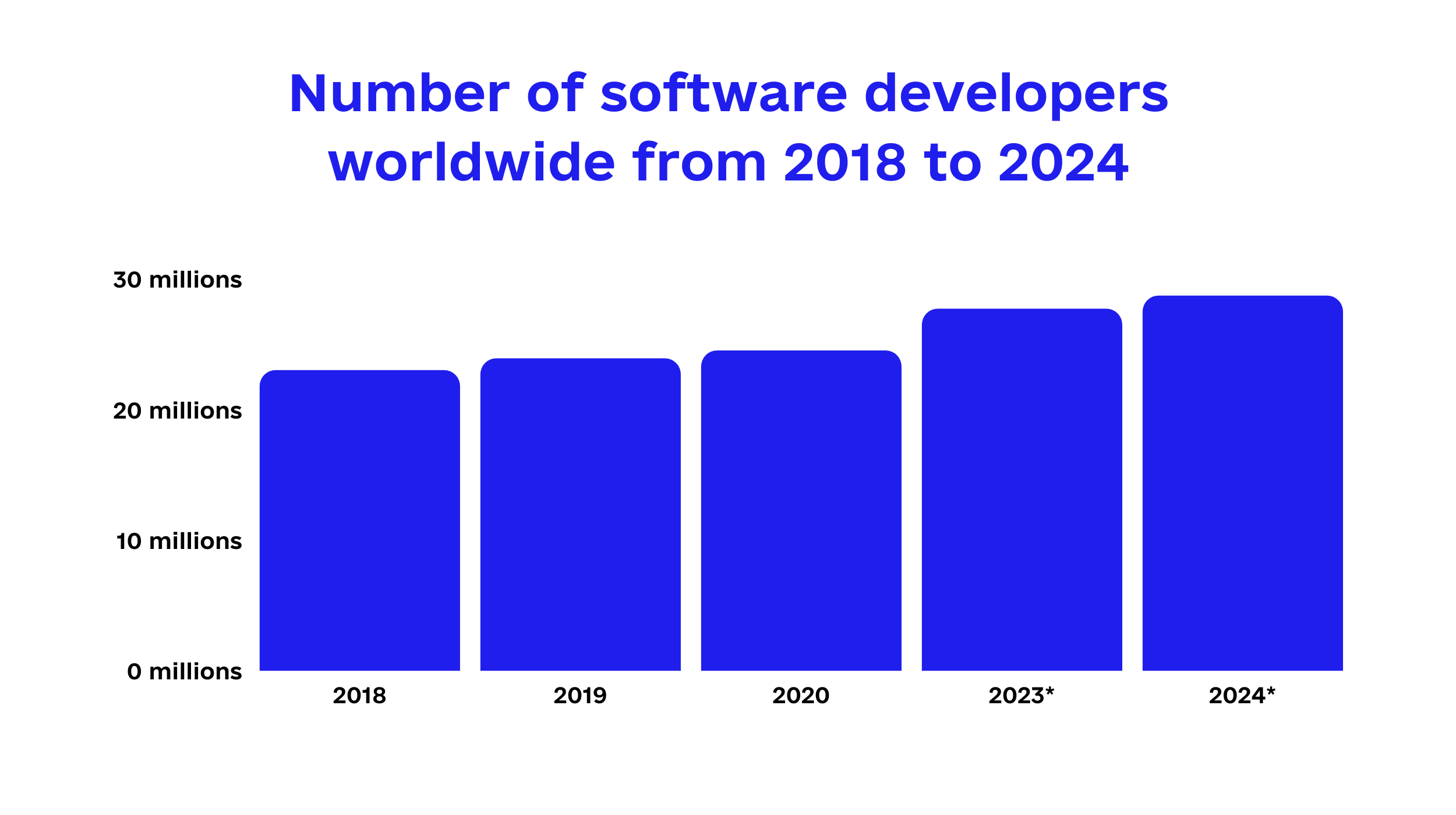
However, it is difficult to learn a skill without first mastering the fundamentals. This is where frameworks and languages meet in software development. They are the fundamental elements that define codes, applications, and software.
As a result, before taking the plunge, it is critical to not only care but also comprehend their differences. In this article, we will contrast a framework with a programming language. You will learn how the use, types, and benefits of these critical components of software development differ.
Let’s get started.
Table of Contents
Frameworks Vs. Programming Languages: Definition and Use
Let us define frameworks and languages so that we can better understand how developers use them.
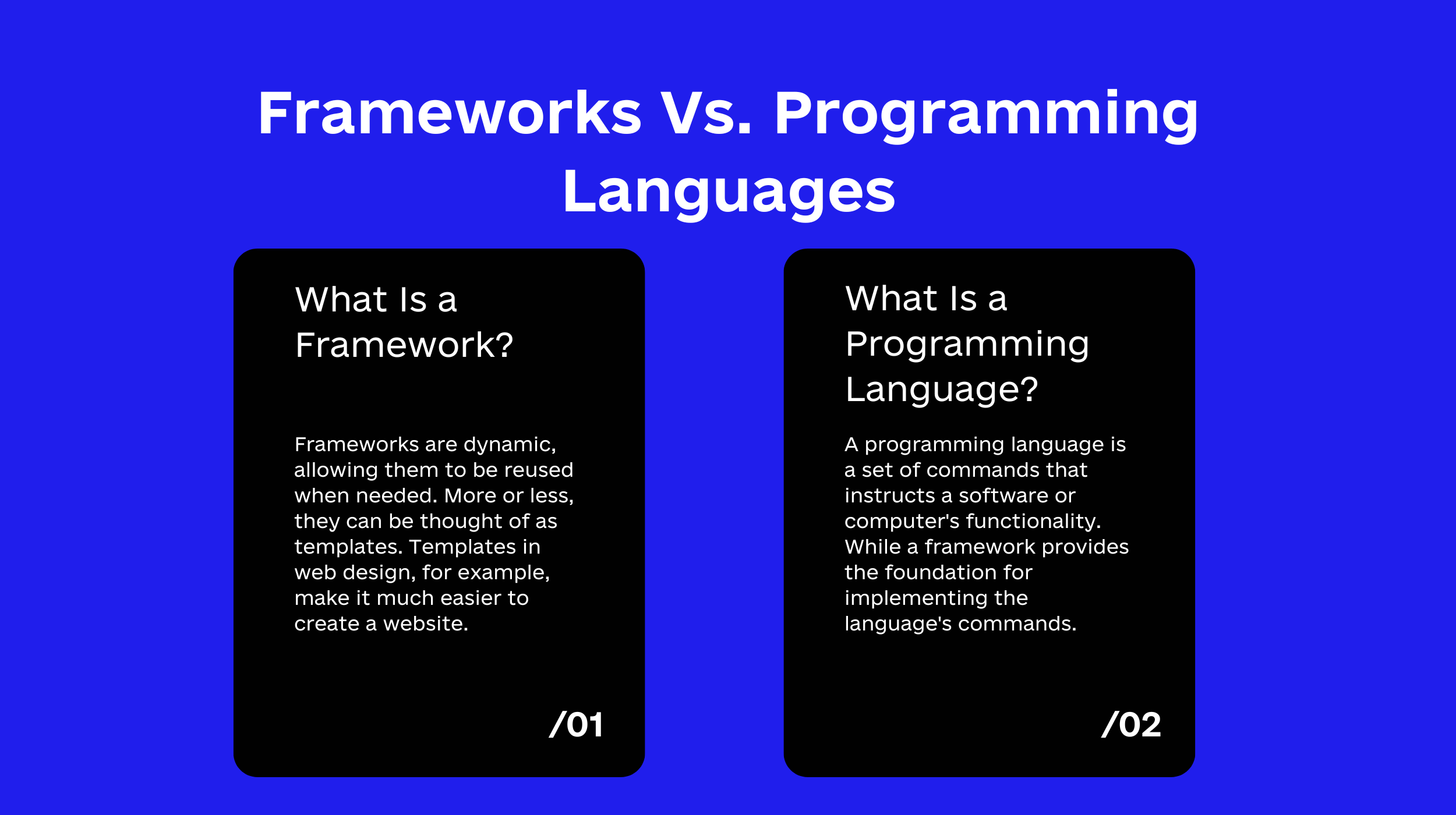
What Is a Framework in Software Development?
The English dictionary defines frameworks as “basic structures that underpin a system.” However, in software development, frameworks serve as pre-programmed components that can be customized to speed up the development process. These predefined components can include a code library, toolsets, compilers, or support programs that can be accessed as needed.
Frameworks are dynamic, allowing them to be reused when needed. More or less, they can be thought of as templates. Templates in web design, for example, make it much easier to create a website.
The framework directs the developer on where to enter codes, a concept known as inversion of control (IOC). This method reduces bugs and makes software testing easier.
Frameworks have proven to be useful in the coding process. A framework’s coding language is specific to a programming language, such as Java or PHP, and provides it with unique features.
To put things in context, a framework specific to a programming language serves as a template for that programming language. This means that frameworks serve as ready-made components designed to accelerate project development.
Then, What Is a Programming Language?
Programming languages and frameworks are often confused as the same thing, but they are not. A programming language is a set of commands that instructs a software or computer’s functionality. While a framework provides the foundation for implementing the language’s commands.
Syntax and rules are the building blocks of programming languages. These rules must be followed whenever a code is written. Frameworks are built on top of programming languages, whereas programming languages are made of syntax.
For instance, the Ruby on Rails framework, which is based on the Ruby programming language, is a prime example. Other frameworks based on the Python programming language include Django and Flask.
Types of Frameworks and Programming Languages
Let’s look at the various types of frameworks and programming languages.
What Are the Types of Frameworks?
There are different frameworks available, each with its own set of features. Here are some examples.
- Web application development frameworks.
- DataScience frameworks.
- Mobile application development frameworks.
- Content management frameworks.
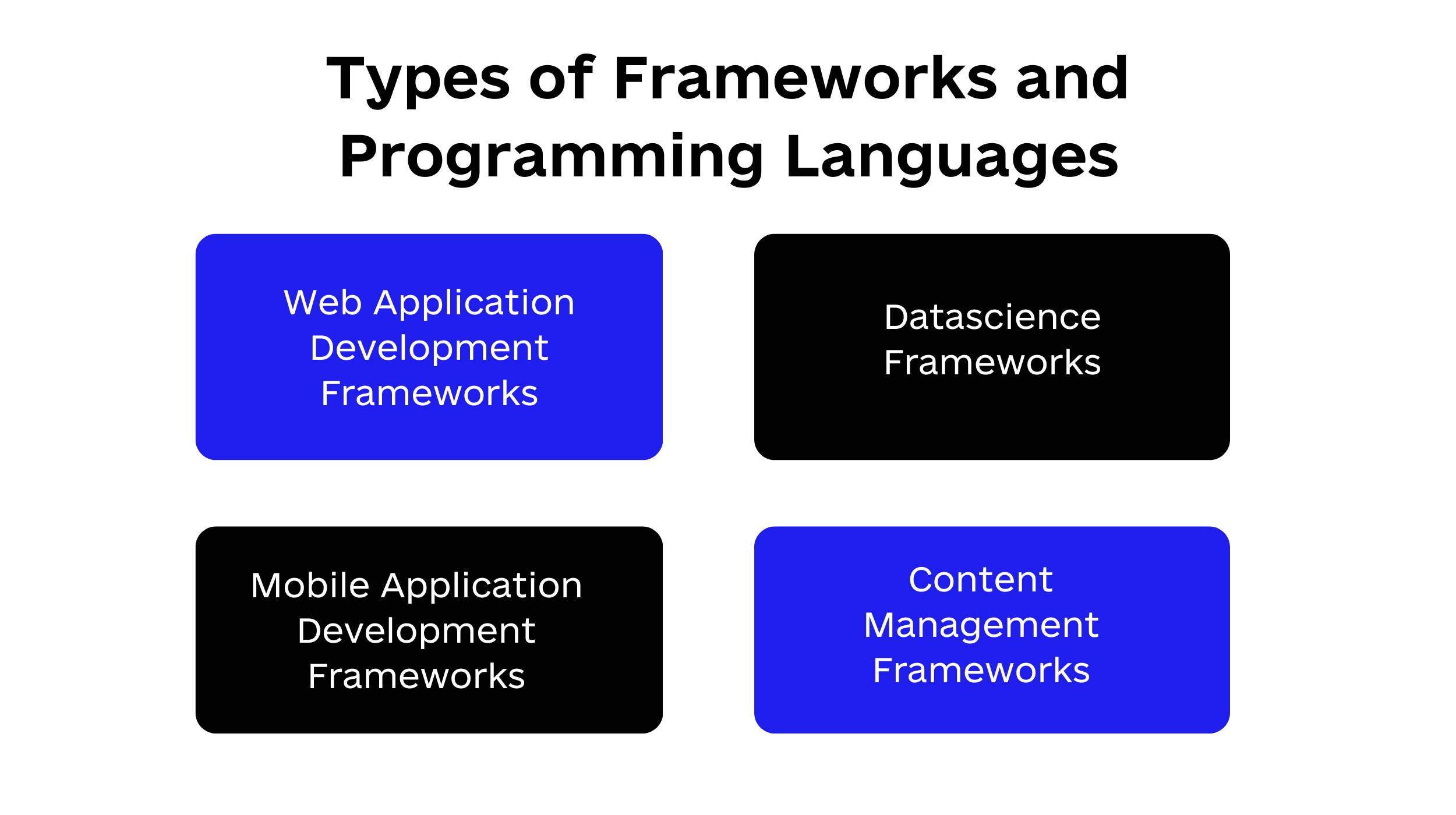
✅ Web Application Development Frameworks
With the increasing use of web applications, we anticipate that web application frameworks will be widely used in 2022.
Web app frameworks facilitate the development of web applications that use web services, resources, and APIs. Interestingly, different frameworks introduce distinct features and capabilities that influence both the look and feel (front-end) and the functionality (back-end) of these web applications.
JavaScript frameworks, for example, are well-known for their ease of use in developing software and applications for either IOS or Microsoft. However, other frameworks in this category include;
- AngularJS: A typescript-based JavaScript framework is widely used in the development of public applications. As a result, many engineers use this framework with different tools when developing Google and other cloud platforms. Netflix, Paypal, and YouTube are just a few of the top tech companies that have adopted AngularJS. According to Statista, approximately 20.39% of developers use AngularJS.
- Django: Django is a free and open-source framework written in the Python programming language. This framework can be found in a variety of popular apps and tools, including Instagram, Mozilla, Pinterest, and Disqus. Django is currently the preferred framework for approximately 14.64% of people.
- Laravel: Laravel is a popular PHP framework thanks to its clean syntax, accessible framework, and implementation of the model-view-controller pattern. In addition, it’s simple to grasp. Statista estimates that 9.45 percent of developers use Laravel.
✅ Datascience Frameworks
Data Science frameworks are applied to statistics, and algorithms to derive knowledge from collected data. These frameworks are unique, with the linear model capable of predicting behavior, language modeling, image recognition, and processing while speeding up development. Data Science frameworks are gaining popularity as new research areas emerge on a daily basis. The vast majority of such frameworks, however, are written in Python. Among the available data science frameworks are:
- Tensorflow: Tensorflow is a Google open-source end-to-end machine learning platform based on deep learning neural networks. The latter features give programmers the tools and open source libraries they need to create and deploy machine learning-powered applications.
- Apache spark: Apache Spark is a large-scale data processing framework with a unified analytics framework. This framework is popular among major corporations such as Amazon, Microsoft, Cisco, and Oracle.
- PyTorch: Facebook created PyTorch, which is compatible with Python and C++. The open-source framework is used in computer vision and natural language processing. PyTorch is employed by platforms such as Comcast, Quadient, and others.
✅ Mobile Application Development Frameworks
These frameworks are designed to make it easier to create apps for mobile platforms like Android and iOS. With this framework, a programmer only needs to write code once to guarantee compatibility across all supported platforms.
Mobile frameworks are broadly classified into: a). native (platform-specific) b). hybrid (native back-end shell and web app front-end), and c). cross-platform (codebases are shared). Some examples of mobile application frameworks are listed below.
- React Native: React Native is an open-source, JavaScript-based framework. It was created by Facebook and is one of the most popular application development frameworks for Android, iOS, macOS, etc. This framework is supported by an enthusiastic community of developers for several reasons. RN is utilized by platforms such as Instagram, Facebook, Skype, etc., as well as tech titans like Tesla.
- Flutter: Google’s Flutter is an open-source user interface framework. It is mostly used for developing cross-platform applications, but a recent update added web and desktop support. Flutter is a modern Dart-based framework that allows for ease of use while leveraging hot reload to improve real-time results. Amazon, eBay, Microsoft, and other companies and websites use this framework.
- Xamarin: To create applications, the Xamarin open-source framework makes use of C# and.NET. It was created by Microsoft. Xamarin is a cross-platform framework that allows developers to reuse shared codebases by converting user interface components into platform-specific elements at runtime. This allows platforms to provide a more native experience. Companies that use this framework include Alaska Airlines, Microsoft Azure, Outback, and others.
✅ Content Management Frameworks
These frameworks enable users to create, organize, deliver, and modify content for blogs, eBooks, mobile applications, etc., as suggested by their names. Content management frameworks provide developers with reusable components for managing and collaborating on web application frameworks. Examples of popular frameworks include:
- WordPress: WordPress is a widely-used platform, powering as much as 42 percent of the web. WordPress’s intuitive interface simplifies website, blog, and ecommerce store creation for users with no coding experience. This framework also comes with a variety of fun themes, plug-ins, and extensions that can be used to give a project a more unique look and feel. SonyMusic.com, AngryBirds.com, BBC America, and many more are just a few examples of sites built on this framework.
- Drupal: Drupal is a PHP-based open-source content management system. Users of the Drupal framework must have some technical expertise, in contrast to WordPress users. However, this framework’s adaptable taxonomy makes it ideal for massive content-heavy initiatives. Arsenal FC, Tesla, Warner Bros., and many more are among the major users of this framework.
- Joomla: Joomla’s framework is a middle ground between that of Drupal and WordPress. In comparison to Drupal, this open-source framework is much simpler to use by non-technical people, though it still isn’t as user-friendly as WordPress. This is the third most popular content management system (CMS) framework because of its adaptability and availability of templates and extensions. Ikea, Linux, Harvard University, and many other institutions have adopted this framework.
What Are the Different Types of Programming Languages?
In today’s era, even the layperson has a better understanding of the various programming languages that exist. However, there is a broad classification of programming languages into which such well-known languages as C++, Python, and HTML are all included. The most common programming languages are:
☑ Low level
Low-level languages are made up of assembly and machine components. Machine language is a simplified form of programming in which instructions are represented by sequences of binary digits. The computer understands machine elements better than humans. In general, the use of low-level machine language has a number of drawbacks, such as being time-consuming and prone to mistakes, as well as being restricted to a specific type of computer.
However, assembly languages eliminate the need for developers to manually enter each digit, replacing them with mnemonic codes that can even be written in English. C, Rust, and C++ are all examples of low-level languages in use today.
☑ High level
Because high-level languages are similar to human languages, they are easier to understand for developers. These languages typically have built-in commands. Although commands exist in low-level languages, they are much easier for the developer to use in high-level languages. High-level languages are further classified as object-oriented and procedural. Python, PHP, Javascript, Ruby, and other high-level languages are examples.
Benefits of a Framework Vs a Programming Language Compared
Different frameworks and programming languages have been described. Let’s take a closer look at the advantages of frameworks and languages in web, mobile, and software development.
What Are the Advantages of Using Frameworks?
- Coding has been simplified and made more efficient.
- Data is now better protected against cyberattacks.
- Using open-source code encourages the formation of developer communities that help one another.
- They enable integration with multiple databases and third-party tools.
- Reduces the likelihood of bugs and errors.
- Improves code readability and maintainability.
What Are the Advantages of Using a Programming Language in Software development?
- Depending on the type, codes are easier for either computers or humans to understand.
- Allows for the creation of frameworks for more efficient and user-friendly programming methods.
When Does a Programming Language Become a Framework?
Due to the wide variety of programming languages available online, it’s tempting to think that one of them must be suitable for any given situation. Contrary to popular belief, however, programming languages alone may not always be sufficient. The most practical solution appears to be making use of prefabricated parts that can be assembled with the help of currently available tools.
To address this issue, programmers create reusable frameworks for different software applications. This not only provides them with instructions on how to use these frameworks but also with ready-made components to speed up the development of their projects. These documents help programmers write code more efficiently and figure out which features of a given framework should be used.
Conclusion
The value of frameworks cannot be overstated; however, they are no substitute for learning basic programming languages and developing a system architectural plan. As a result, before incorporating frameworks into development, it is critical to first understand the framework or programming language appropriate for the project based on the developed application. Choosing the best framework for your project cuts down on time to market.
Code & Care’s team provides the experienced and modern frameworks required to get your project off the ground. Get in touch with us!
Read also:
How To Build A Question and Answer Website Like Quora: Costs, Features, & Steps
How to Make a Location-Based App Tailored Exactly to Your Needs
How to Build a Job Search Website: Extended Guide [5 Key Steps]

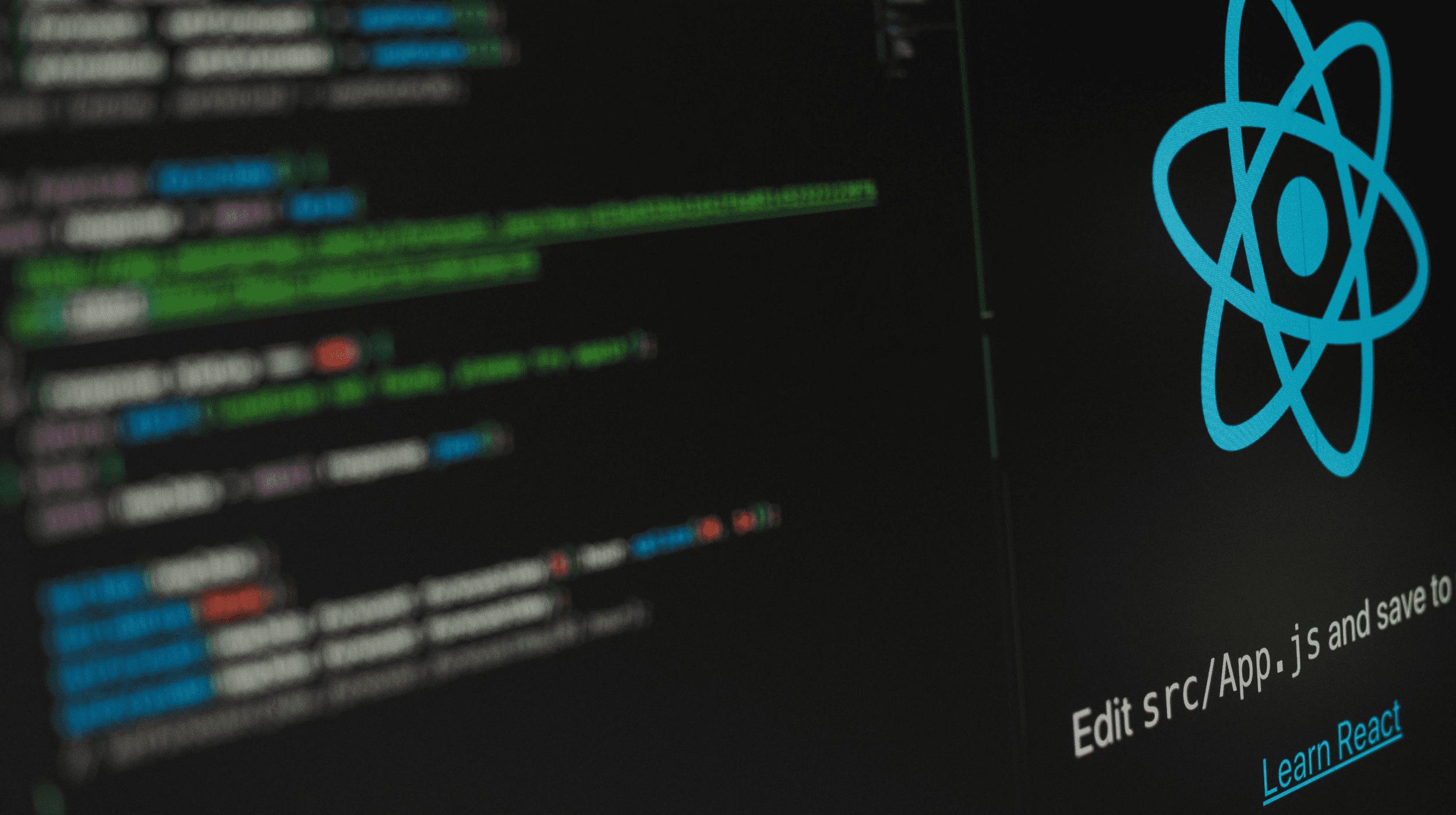






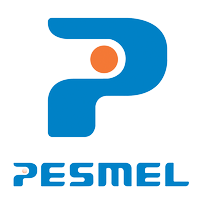

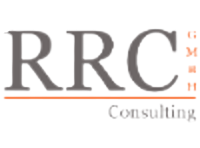



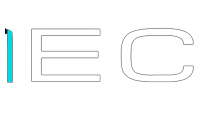

It was an excellent collaboration! I will engage with Code&Care again because it’s been a very valuable experience for our project. I must say their team delivered results faster than expected.